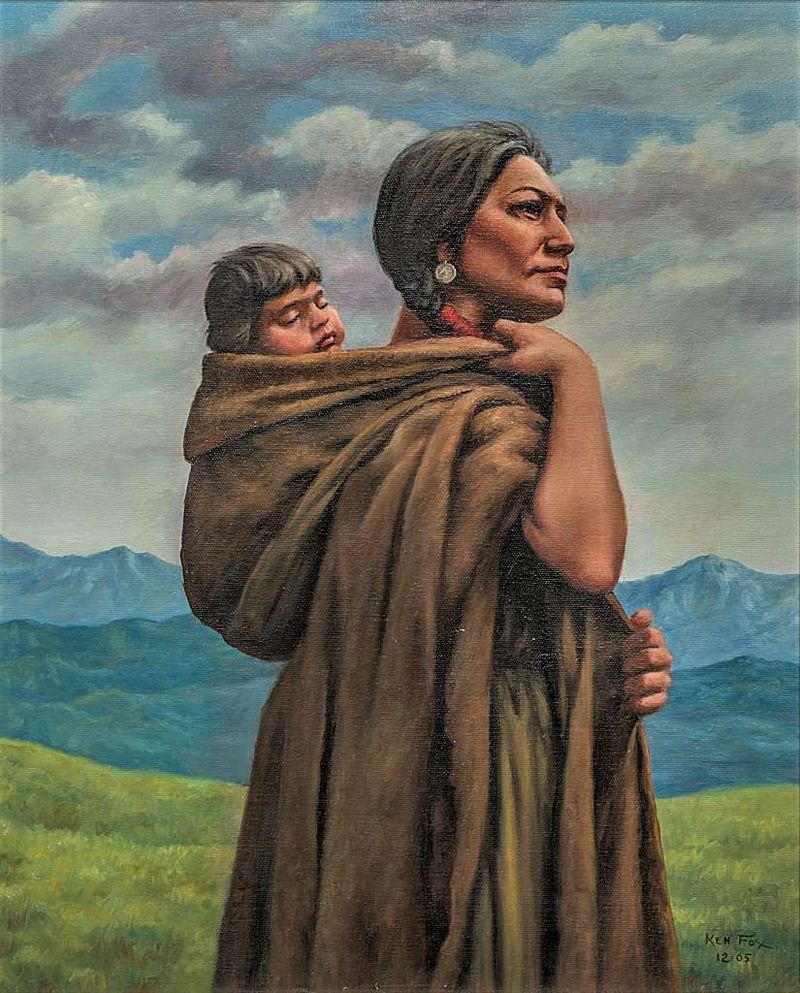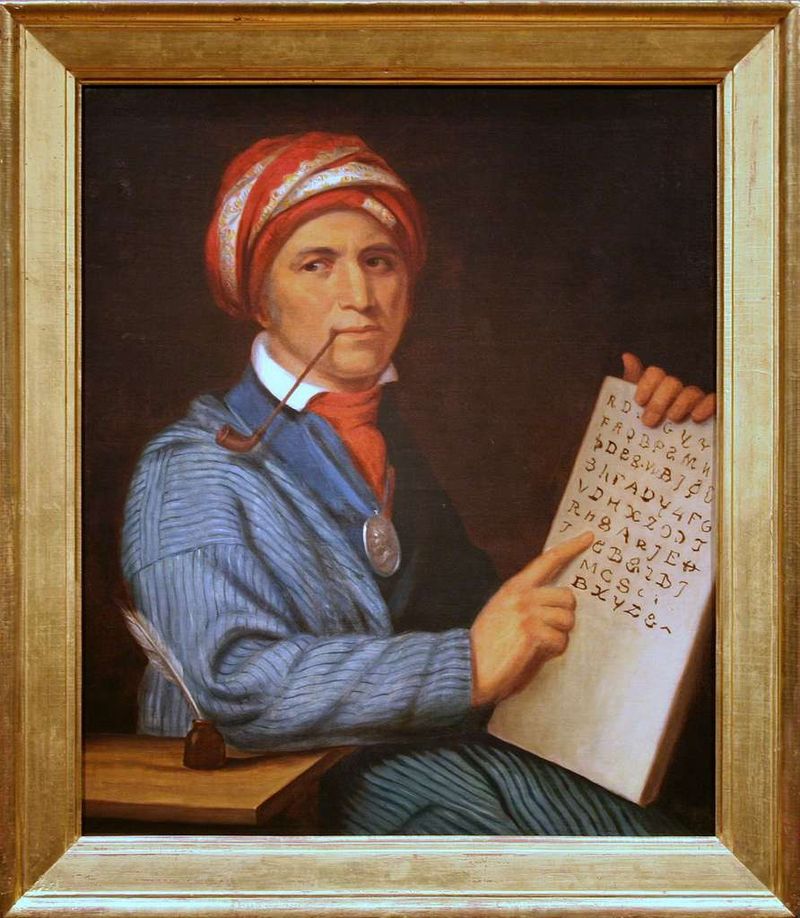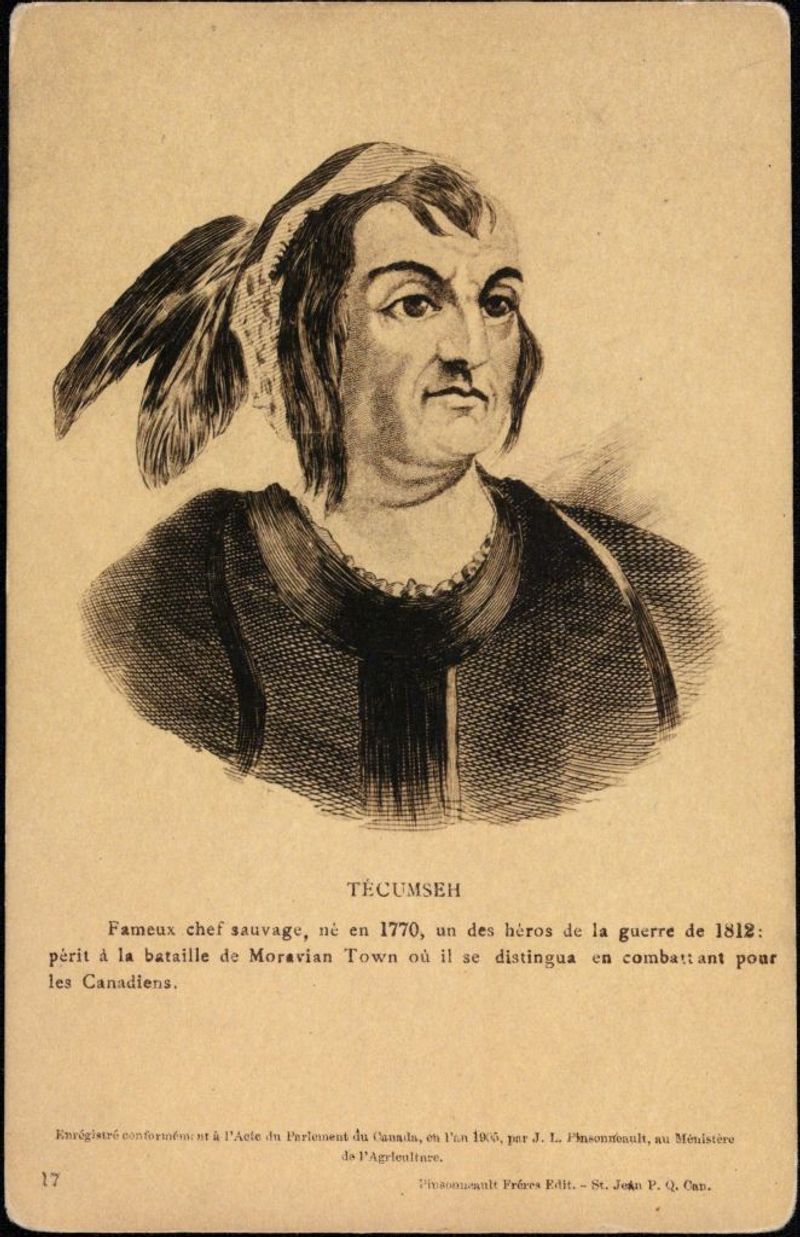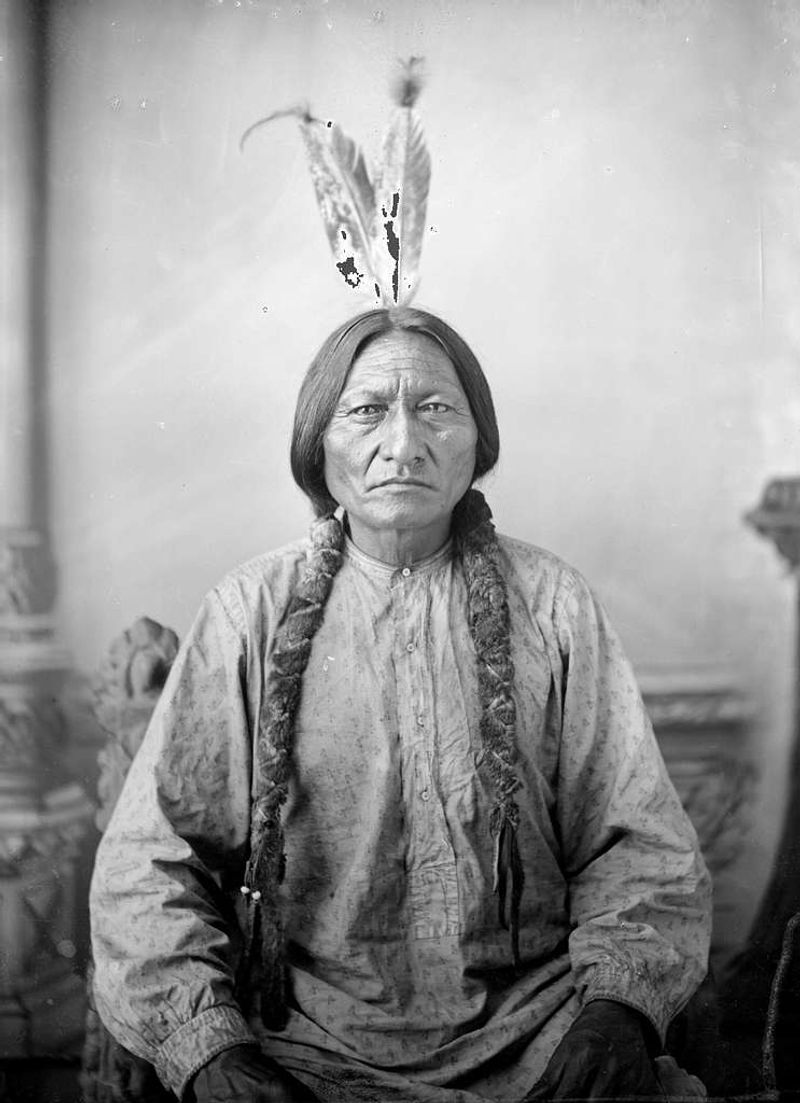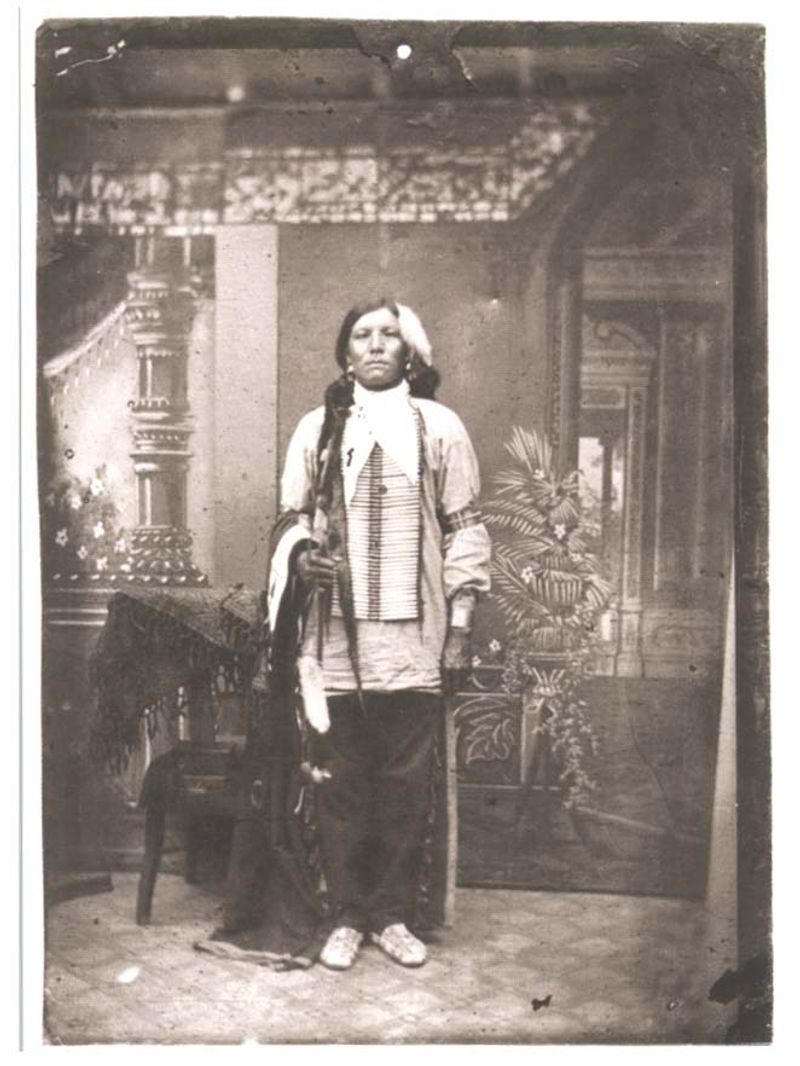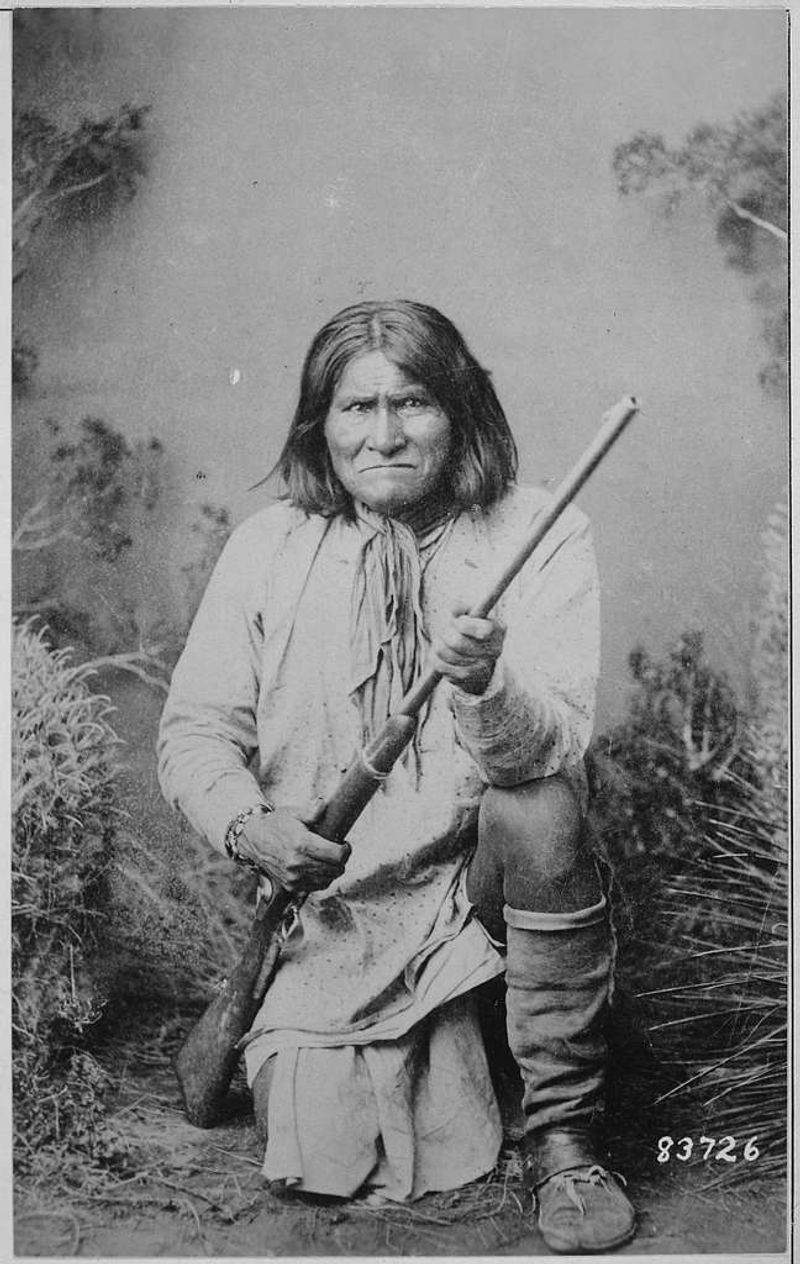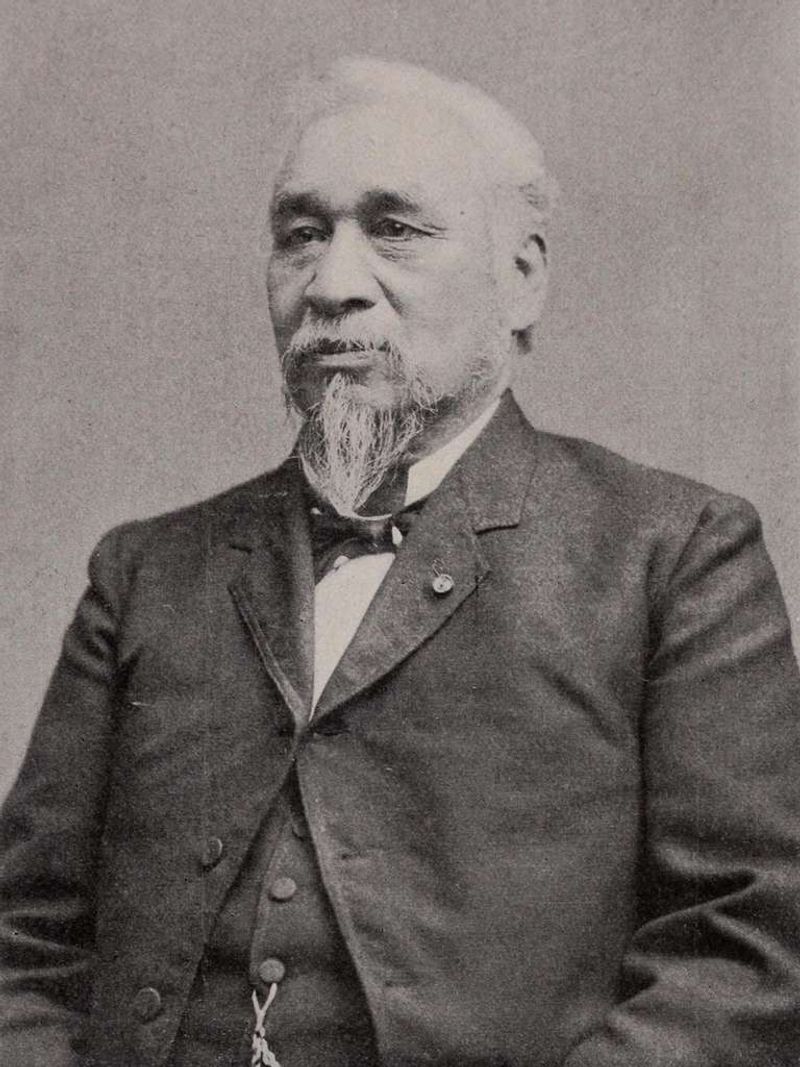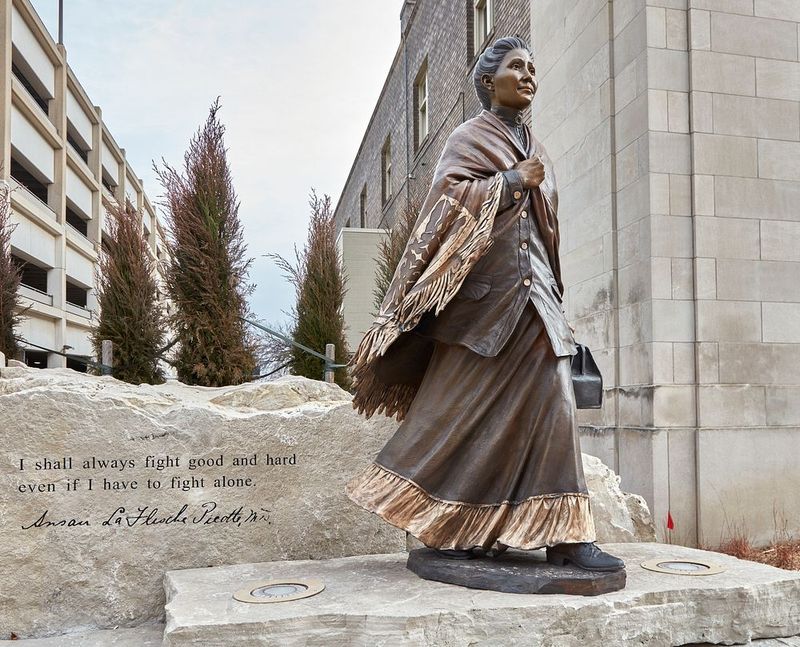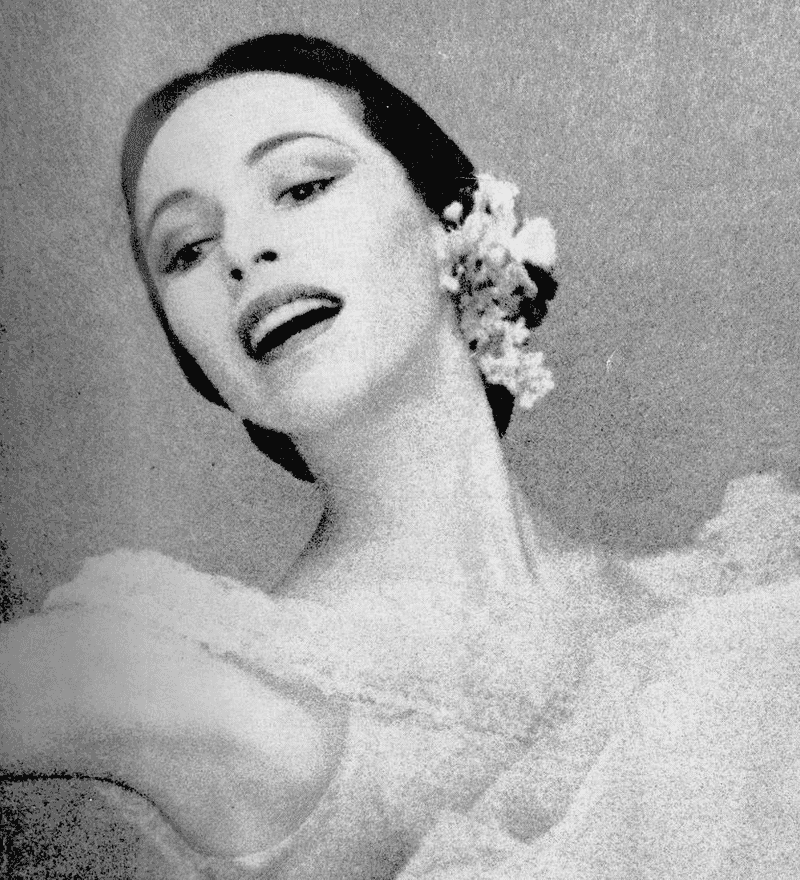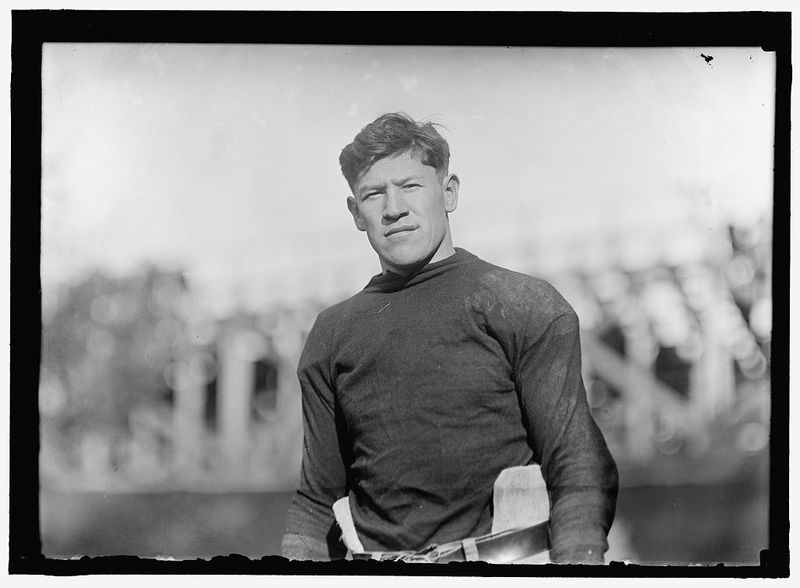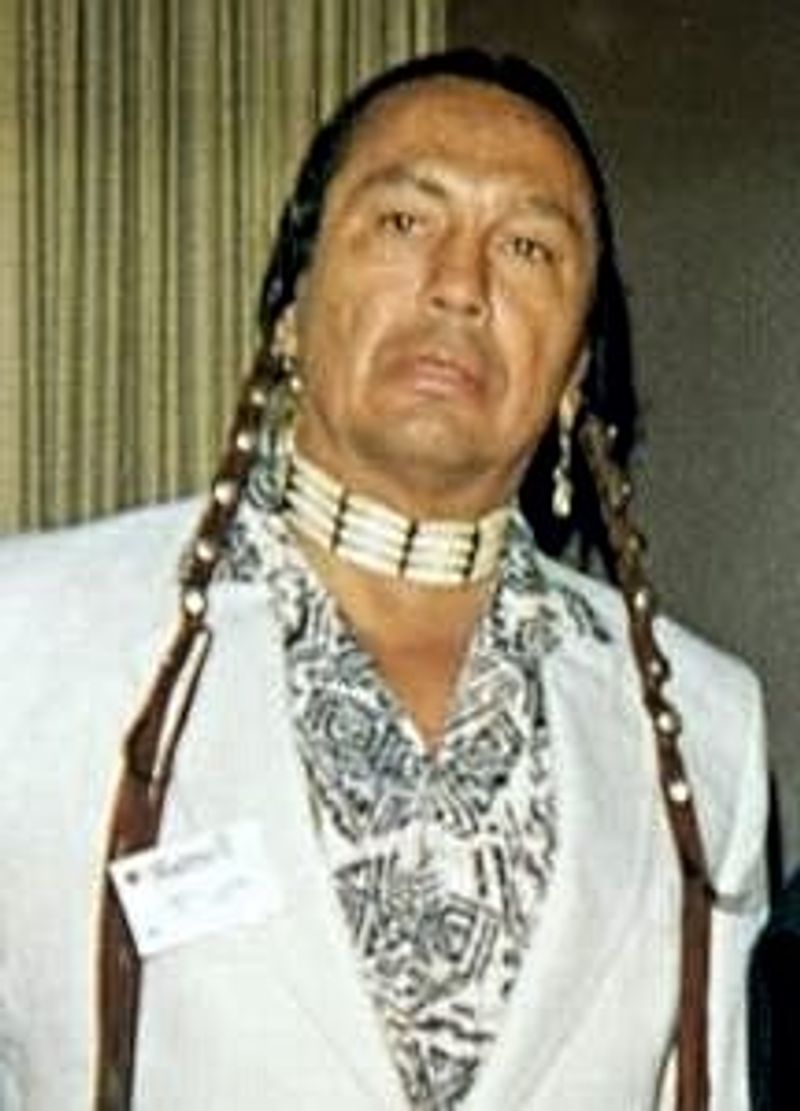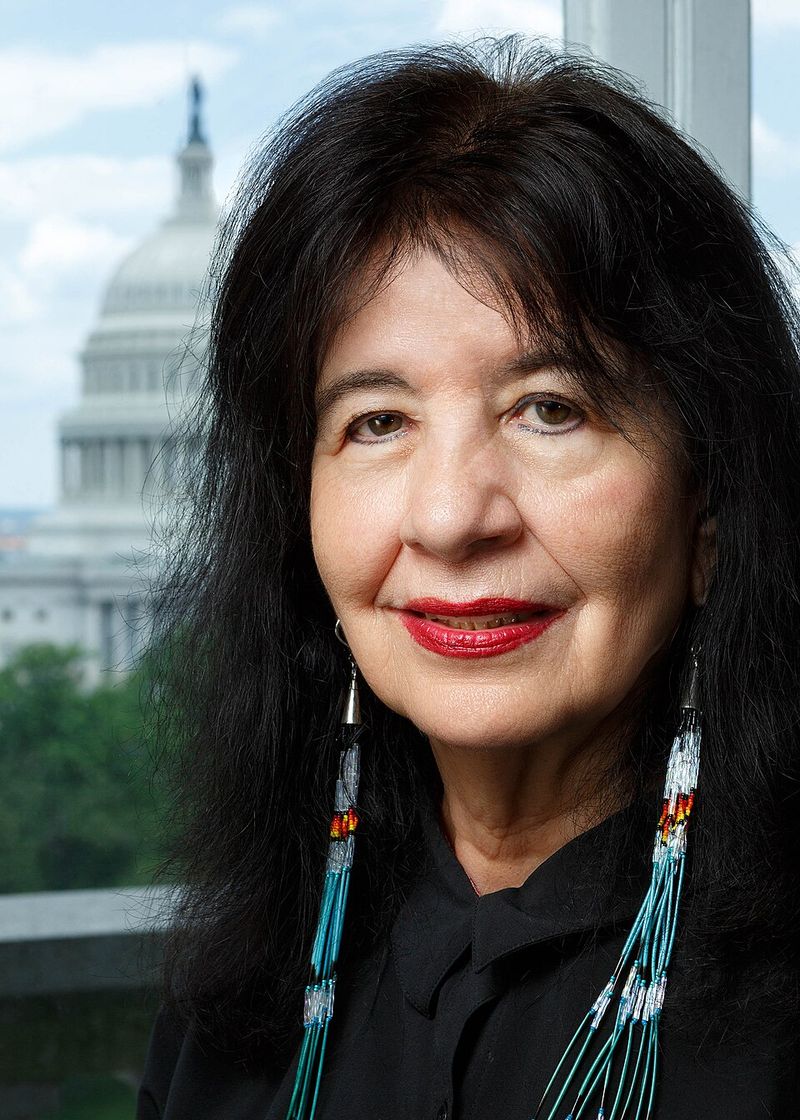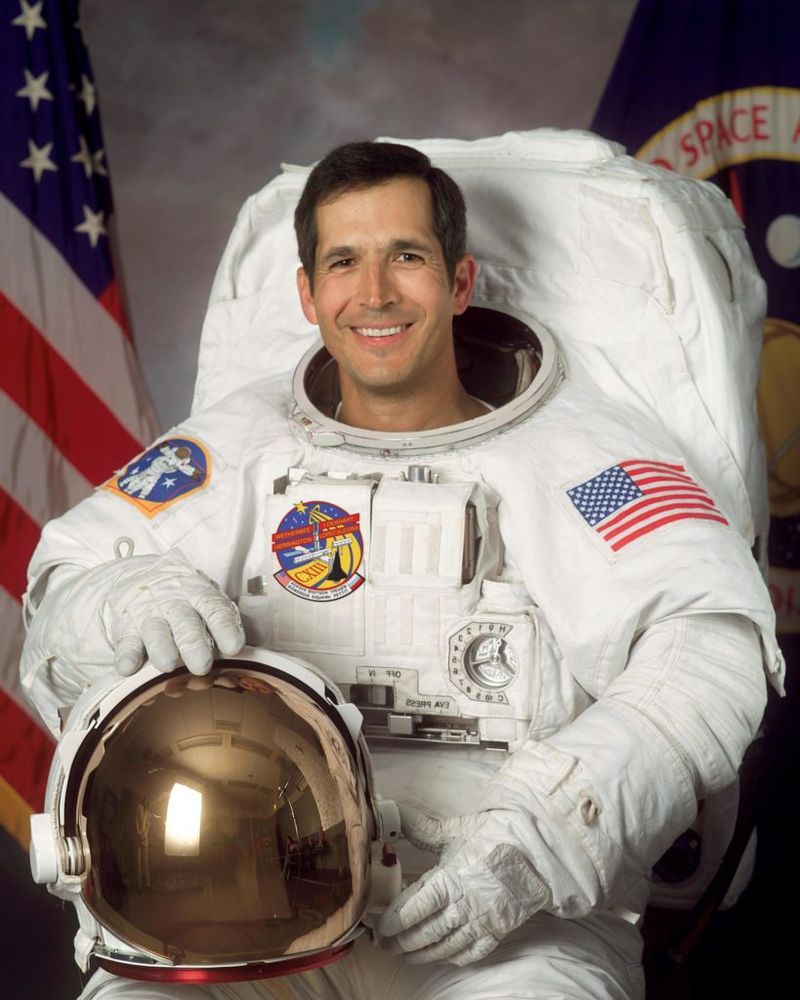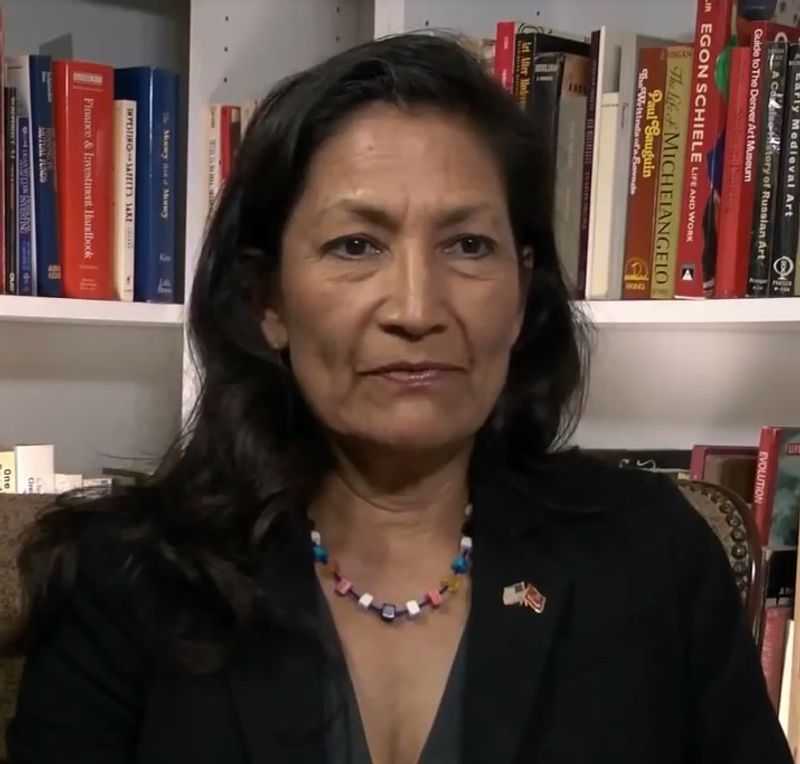Throughout history, Indigenous leaders, artists, and activists have shaped the course of American life in ways that often go unrecognized. Their courage, creativity, and vision have challenged injustice, preserved culture, and inspired generations. From interpreters who bridged worlds to poets who gave voice to resilience, these nineteen figures stand as testaments to the enduring strength of Native communities.
1. Sacagawea (Lemhi Shoshone)
When just a teenager, Sacagawea embarked on one of history’s most famous journeys across uncharted territory. Her knowledge of plants, terrain, and languages proved invaluable to the Corps of Discovery as they traveled thousands of miles westward.
Carrying her infant son on her back, she served as interpreter and diplomat, helping the expedition communicate with various tribal nations. Her presence signaled peaceful intentions, opening doors that might otherwise have remained closed.
Beyond survival skills, Sacagawea’s courage in the face of danger and her ability to navigate between cultures left a lasting legacy. She remains a symbol of strength, resourcefulness, and the vital role Native women played in shaping American history.
2. Sequoyah (Cherokee)
A silversmith by trade, Sequoyah achieved something remarkable without ever learning to read English himself. After twelve years of dedicated work, he completed a writing system that captured every sound in the Cherokee language using eighty-six symbols.
Within months, thousands of Cherokee people became literate. Newspapers, books, and official documents began circulating in Cherokee, preserving stories and traditions that might have been lost. This literacy boom strengthened Cherokee identity during a turbulent era.
His syllabary remains in use today, a living testament to one man’s vision and determination. Sequoyah proved that language preservation could empower entire communities and safeguard cultural heritage for future generations.
3. Tecumseh (Shawnee)
Eloquence and strategic brilliance defined Tecumseh’s efforts to unite dozens of tribal nations against American expansion. He traveled thousands of miles, from the Great Lakes to the Gulf Coast, urging tribes to set aside old rivalries and stand together.
His vision of a unified Native confederacy challenged the divide-and-conquer tactics used by U.S. officials. Though his dream ultimately fell short, his speeches and diplomatic missions inspired resistance movements for decades.
Tecumseh’s legacy endures as a symbol of Indigenous unity and sovereignty. His words about protecting ancestral lands still resonate, reminding us that one voice, raised with conviction and clarity, can spark movements that outlive any single lifetime.
4. Sitting Bull (Hunkpapa Lakota)
A holy man and warrior, Sitting Bull’s visions guided his people through some of their darkest hours. Before the Battle of the Little Bighorn, he foresaw soldiers falling into camp like grasshoppers from the sky, a prophecy that came true when Lakota and Cheyenne forces achieved a stunning victory.
His refusal to sign away the Black Hills demonstrated unwavering commitment to Lakota sovereignty. Even after years of exile in Canada and eventual surrender, he continued advocating for his people’s rights.
Sitting Bull’s spiritual leadership and political resistance made him a symbol of Indigenous resilience worldwide. His life reminds us that true power flows from conviction, not compromise.
5. Crazy Horse (Oglala Lakota)
Mystery surrounds much of Crazy Horse’s life since he refused to be photographed, believing cameras could capture one’s spirit. What we know comes from those who fought beside him and witnessed his tactical genius on the battlefield.
His leadership at Little Bighorn helped secure one of the most significant Native victories against U.S. forces. He fought not for glory but to protect the sacred Black Hills and preserve the Lakota way of life.
Even in death, his spirit remains untamed. The massive mountain carving being sculpted in his honor reflects his outsized impact on Native sovereignty movements and his enduring status as a symbol of resistance and cultural pride.
6. Chief Joseph (Nez Perce)
In 1877, Chief Joseph led his people on a 1,170-mile fighting retreat toward Canada, outmaneuvering U.S. Army columns for months. Just forty miles from the border, exhaustion and winter forced surrender, yet his tactical brilliance earned respect even from military opponents.
His surrender speech, ending with the words, “I will fight no more forever,” moved a nation with its dignity and sorrow. He spent the rest of his life advocating peacefully for his people’s return to their homeland.
Though he never achieved that dream, Chief Joseph’s eloquence and humanity challenged stereotypes. His legacy teaches that moral authority can be as powerful as military might.
7. Geronimo (Chiricahua Apache)
After Mexican soldiers killed his family, Geronimo waged a decades-long resistance that made him the most feared Apache leader in the Southwest. His small band repeatedly evaded thousands of American and Mexican troops, using intimate knowledge of desert terrain to survive.
His final surrender in 1886 required 5,000 soldiers and marked the end of the Indian Wars. Even in captivity, he remained defiant, appearing at expositions and Wild West shows while never giving up hope of returning home.
Geronimo’s name became a battle cry for paratroopers in World War II, testament to his warrior reputation. His story embodies both the tragedy of displacement and the unbreakable spirit of resistance.
8. Ely S. Parker (Seneca)
Educated as an engineer, Ely Parker overcame discrimination to serve as General Ulysses S. Grant’s military secretary during the Civil War. His elegant handwriting preserved one of history’s most important documents when he penned the final draft of Lee’s surrender at Appomattox.
After the war, Grant appointed him the first Native American Commissioner of Indian Affairs. Parker advocated for education and peaceful assimilation policies, though critics from both communities challenged his approach.
His life bridged two worlds during a transformative era. Whether drafting surrender terms or shaping federal policy, Parker demonstrated that Native Americans could excel at the highest levels of government and military service.
9. Susan La Flesche Picotte (Omaha)
Watching a sick Native woman die because the white doctor refused to treat her planted a seed that would blossom into history. Susan La Flesche Picotte graduated top of her medical school class in 1889, becoming the first Native American woman to earn a medical degree.
She returned to the Omaha Reservation, where she treated patients regardless of their ability to pay. Over three decades, she cared for more than 1,300 people across 1,350 square miles, often traveling by horse in harsh weather.
Her crowning achievement came in 1913 when she opened a hospital on the reservation. Dr. Picotte’s legacy proves that healing extends beyond medicine to include advocacy, compassion, and breaking barriers.
10. Wilma Mankiller (Cherokee)
When Wilma Mankiller became Principal Chief in 1985, skeptics doubted a woman could lead the second-largest tribe in America. She proved them wrong by transforming Cherokee Nation governance and dramatically improving services for thousands of tribal members.
Her community-focused approach emphasized self-reliance and cultural preservation. Under her leadership, healthcare facilities expanded, housing improved, and educational opportunities multiplied. She empowered communities to solve their own problems rather than waiting for outside help.
Mankiller’s tenure redefined what Indigenous leadership could look like. Her autobiography and countless speeches inspired Native women everywhere, showing that determination and vision matter more than gender when building stronger, more resilient communities.
11. Maria Tallchief (Osage)
Born on an Osage reservation in Oklahoma, Maria Tallchief transformed American ballet through sheer talent and determination. She became the New York City Ballet’s first prima ballerina, dazzling audiences with her technical precision and passionate performances.
Her partnership with choreographer George Balanchine revolutionized ballet in America. She starred in groundbreaking productions like “The Firebird,” bringing a distinctly American energy to a traditionally European art form. Critics praised her power, speed, and artistic interpretation.
Tallchief shattered stereotypes about Native Americans and women in the arts. She proved that excellence knows no racial or cultural boundaries, paving the way for future generations of diverse dancers to claim their place on the world’s greatest stages.
12. Jim Thorpe (Sac and Fox Nation)
King Gustav V of Sweden called him “the greatest athlete in the world” after Thorpe won gold medals in both the pentathlon and decathlon at the 1912 Olympics. His dominance was so complete that he defeated the silver medalist by nearly 700 points in the decathlon.
Though officials later stripped his medals over technicalities, Thorpe’s athletic legacy remained unblemished. He excelled in football, baseball, and basketball at professional levels, becoming the first president of what would become the NFL.
Restored posthumously, his Olympic medals now symbolize triumph over adversity. Thorpe’s versatility and competitive spirit continue inspiring athletes worldwide, proving that true greatness transcends any single sport or momentary setback.
13. Russell Means (Oglala Lakota)
Russell Means grabbed headlines in 1973 when he and other American Indian Movement activists occupied Wounded Knee for seventy-one days, demanding treaty rights and tribal sovereignty. The standoff brought national attention to conditions on reservations and broken government promises.
His confrontational style and media savvy made him one of the most recognizable Native activists of the twentieth century. He protested everything from sports mascots to uranium mining, never backing down from controversial positions.
Later, Means transitioned to acting, appearing in films like “The Last of the Mohicans.” Whether on protest lines or movie screens, he used every platform to advocate for Indigenous rights, inspiring younger activists to speak truth to power.
14. N. Scott Momaday (Kiowa)
When “House Made of Dawn” won the Pulitzer Prize in 1969, it marked a watershed moment for Native American literature. Momaday’s lyrical prose blended Kiowa oral traditions with modernist techniques, creating something entirely new and deeply rooted in Indigenous experience.
His novel told the story of a World War II veteran struggling to reconcile traditional Pueblo life with post-war America. The book’s success opened doors for countless Native writers who had been shut out of mainstream publishing.
A poet, essayist, and professor, Momaday has spent decades celebrating the power of language and storytelling. His work reminds us that literature can preserve culture, heal trauma, and build bridges between different ways of seeing the world.
15. Louise Erdrich (Turtle Mountain Band of Chippewa Indians)
Louise Erdrich’s novels weave together generations of characters living in and around North Dakota reservations, creating an intricate tapestry of Native life. Her 2020 novel “The Night Watchman,” based on her grandfather’s activism, won the Pulitzer Prize for its powerful depiction of tribal resistance to termination policies.
Running an independent bookstore in Minneapolis, she supports Native writers while continuing to produce acclaimed fiction. Her stories tackle everything from land rights to family dynamics with humor, heartbreak, and unflinching honesty.
With over twenty books to her name, Erdrich has become one of America’s most celebrated living authors. Her multigenerational narratives preserve Ojibwe culture while exploring universal themes of identity, belonging, and survival.
16. Joy Harjo (Muscogee/Creek Nation)
As the first Native American U.S. Poet Laureate, Joy Harjo brought Indigenous voices to the nation’s literary center stage. Her three consecutive terms from 2019 to 2022 allowed her to amplify poetry as a tool for healing, justice, and cultural preservation.
A saxophonist as well as a poet, Harjo blends music with words, creating performances that honor Muscogee Creek traditions while speaking to contemporary issues. Her collections explore themes of memory, landscape, and survival with stunning imagery and emotional depth.
Harjo’s work proves that poetry remains vital in the twenty-first century. Through readings, recordings, and teaching, she has inspired countless writers to find their own voices and claim their place in the American literary tradition.
17. John Herrington (Chickasaw Nation)
When Space Shuttle Endeavour launched in 2002, John Herrington carried a Chickasaw Nation flag and six eagle feathers into orbit, honoring his heritage while making history. As the first enrolled tribal member to fly in space, he completed three spacewalks totaling nearly fourteen hours.
A naval aviator before joining NASA, Herrington brought discipline and skill to his astronaut training. His mission included construction work on the International Space Station, contributing to humanity’s permanent presence in space.
After retiring from NASA, he has dedicated himself to encouraging Native youth to pursue STEM careers. Through school visits and mentorship programs, Herrington shows young people that the stars are within reach for anyone willing to dream big and work hard.
18. Deb Haaland (Laguna Pueblo)
Deb Haaland’s 2021 confirmation as Secretary of the Interior placed a Native American in charge of the very department that once sought to eliminate Indigenous peoples. Her appointment represents a profound shift in how the federal government approaches tribal relations and public lands management.
Before her Cabinet role, she served in Congress, where she championed environmental protection and Indigenous rights. As Interior Secretary, she has launched initiatives addressing missing and murdered Indigenous women, expanded tribal co-management of public lands, and confronted the legacy of Indian boarding schools.
Haaland’s leadership demonstrates that representation matters. Her decisions affect millions of acres and countless lives, proving that Native voices belong at every level of government, shaping policies that honor both history and future generations.

